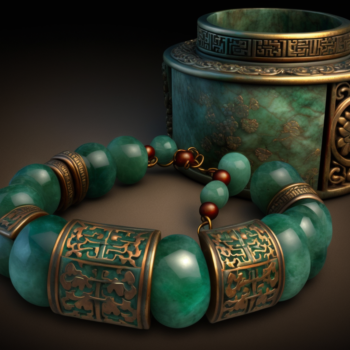8 Essential Requirements For Carrying Out An Accurate Charitable Donation Appraisal
Charitable gifts of art and antiques can be a win‑win: a public benefit and, for the donor, a potential tax deduction. But the tax rules for non‑cash charitable contributions are exacting, and the appraisal must meet specific standards that differ from insurance or estate appraisals. If you collect, appraise, or donate art and antiques, knowing the requirements safeguards credibility, withstands audit, and ensures the deduction reflects true market behavior.
Below, you’ll find the eight core requirements that define a compliant, accurate charitable donation appraisal, plus practical guidance, pitfalls to avoid, and a quick checklist you can use before you sign Form 8283.
Why Charitable Donation Appraisals Are Different
Donation appraisals determine fair market value (FMV) for tax reporting—not retail replacement cost, not what a dealer asks, and not the donor’s original purchase price. The standard is the price a willing buyer would pay a willing seller, neither under compulsion, both having reasonable knowledge of relevant facts, in the most relevant market.
Other features make these appraisals distinct:
- The appraiser must be “qualified” and independent.
- The appraisal must be “qualified” in content and timing.
- Specific federal thresholds trigger signature, attachment, and retention rules.
- The report often must address use restrictions, authenticity, provenance, and marketability in more depth than other appraisal types.
With that context, here are the eight essential requirements.
The 8 Essential Requirements
1) Engage a qualified, independent appraiser
- Credentials: The appraiser should have verifiable education and experience appraising the type of property in question (e.g., American paintings, tribal artifacts, 18th‑century furniture). Appraisal organization membership and USPAP compliance are strong indicators of competency.
- Experience: Look for recent, relevant market experience and published work in the specialty when possible.
- Independence: The appraiser must be disinterested. No conflicts such as being the donor, the donee, a party to the acquisition or sale of the object, or a person who is regularly buying/selling the donor’s work at stake in the result.
- Compensation: Fees should not be contingent on the appraised value or deduction outcome. Disclose fee structure in the report.
Why it matters: A non‑qualified or conflicted appraiser can invalidate an otherwise careful valuation.
2) Use the correct standard of value: Fair Market Value
- FMV, not retail replacement: Donation deductions use FMV. Replacement cost (for insurance) often overstates value for tax purposes.
- The relevant market: Identify the market where the item is most commonly sold to the public—often a specific auction tier or dealer market. For mid‑range antiques, this might be regional auctions; for blue‑chip art, major international auctions.
- Adjust for market realities: Account for buyer’s premiums, seller’s commissions, and market trends around the effective date.
Why it matters: Selecting the wrong market or standard can create material misstatements. The IRS often challenges appraisals that use retail asking prices or ignore transactional costs.
3) Set the right effective date and timing
- Effective date: The contribution date is the valuation date. If the appraisal uses another date, it must explain and reconcile market movements to the contribution date.
- Timing: The appraisal must be prepared no earlier than 60 days before the contribution and no later than the due date (including extensions) of the return on which the deduction is first claimed.
- Market sensitivity: Be explicit about any volatility between inspection and the contribution date. If needed, update comparables and commentary.
Why it matters: A “stale” appraisal outside the allowable window or disconnected from the actual contribution date can be disregarded.
4) Conduct a thorough inspection and condition report
- Physical inspection: For unique art and antiques, in‑person inspection is best. If circumstances require remote work, document methodology and limitations, and obtain high‑resolution images and measurements verified by a trusted party.
- Condition: Detail all condition elements that influence value—restoration, repairs, overpainting, warping, patina, losses, pest damage, fading, or structural instability. Note any conservation reports.
- Photographs: Include clear, well‑lit images of front/back, signatures/marks, defects, and scale references where helpful.
Why it matters: Condition is a primary driver of value. Vague or optimistic descriptions invite IRS scrutiny and dealer skepticism alike.
5) Verify authenticity, title, and provenance
- Authenticity: State the basis for attribution (e.g., catalogue raisonné citations, expert opinions, labels, stylistic analysis). If attribution is uncertain, use conditional language and reflect the risk in the value.
- Provenance: Provide an ownership chain where known, acquisition details, and any exhibition or publication history. Note gaps or red flags and their impact.
- Title and transferability: Confirm the donor has clear title and the legal right to donate. Identify any restrictions (e.g., donor‑imposed display conditions, conservation obligations) that could depress FMV.
Why it matters: Authenticity doubts or title clouds reduce value. An appraisal that ignores them can mislead the donee and the IRS.
6) Support value with relevant, comparable market data
- Comparable sales: Use recent, arms‑length sales from the appropriate market level. Explain why each comparable is relevant (artist/school, period, medium, size, subject, condition, provenance).
- Adjustments: Make reasoned adjustments for differences in size, condition, date, subject desirability, quality within the artist’s oeuvre, and sale context (day vs. evening sale, regional vs. international venue).
- Market commentary: Discuss supply/demand dynamics, cyclicality, and liquidity in the specific segment (e.g., Arts & Crafts furniture vs. Post‑War prints).
- Documentation: Cite sale dates, venues, lot numbers, hammer prices, and premiums where applicable.
Why it matters: Unsubstantiated opinions—even by experts—carry little weight. Transparent, market‑anchored analysis is the core of a defensible appraisal.
7) Include all required elements of a qualified appraisal report
While formats vary, a qualified appraisal for tax purposes typically includes:
- Object identification: Maker/attribution, title/description, medium/materials, dimensions, edition/serial/marks, date/period, and distinguishing features.
- Detailed condition statement and inspection date.
- Ownership history and how the donor acquired the property, with acquisition date and cost basis if known.
- Effective date of valuation and report date.
- Statement of the purpose (charitable contribution), the intended use (income tax reporting), and the definition of FMV used.
- Valuation approach and methodology with comparable data and analysis.
- Market context discussion and summary conclusion of FMV per item.
- Appraiser’s qualifications, signature, declaration of independence, and fee disclosure.
- For art valued at $20,000 or more: include a photograph. For certain high‑value donations, retain work images and documentation that the IRS may request.
- Keep in mind: For non‑art property over $500,000, the full appraisal must be attached to the tax return. For artworks of $20,000 or more, attach the appraisal and photograph. Maintain a complete copy in your files.
Why it matters: Missing report elements can disqualify the appraisal, regardless of the quality of the valuation.
8) Coordinate the tax forms and acknowledgments correctly
- Form 8283, Section B: Required for most non‑cash contributions of art/antiques over $5,000. The appraiser and the donee organization must sign. Ensure itemization, valuation, and descriptions match the appraisal.
- Contemporaneous written acknowledgment: Obtain from the charity stating whether you received goods/services in return, the date, and a description of the gift.
- Large‑value reviews: For art valued at $50,000 or more, donors can request an IRS Statement of Value. Be prepared for potential review by the IRS Art Advisory Panel.
- Donee disposition: If the charity disposes of the item within three years, they file a form notifying the IRS. Retain your documentation in case of follow‑up.
- Recordkeeping: Keep the appraisal, images, research, correspondence, and acknowledgments for your records well beyond typical retention windows.
Why it matters: Even a perfect appraisal fails the test if the forms, signatures, and acknowledgments are incomplete or inconsistent.
Avoidable Pitfalls and Pro Tips
- Using replacement cost: Insurance values or gallery asking prices are not FMV. Replace them with realized, arms‑length sales and adjust for differences.
- Wrong market tier: A regional artist selling primarily in regional auctions should not be valued from a few outlier sales at marquee houses unless justified.
- Ignoring basis and holding period: For tax planning, remember that if you donate “capital gain property” held more than one year to a public charity for a related use, you may deduct FMV. If held one year or less, or if the use is unrelated to the charity’s mission, the deduction may be limited (often to cost basis). The appraisal still must reflect FMV; the tax calculation is separate.
- Overlooking restrictions: Donor‑imposed conditions on display, loans, or resale can reduce FMV. Disclose them and consider their impact.
- Skipping a physical inspection: Remote-only appraisal is risky for unique objects. If unavoidable, document limitations and obtain third‑party verification and detailed images.
- Thin or stale comparables: For niche categories with limited sales, broaden the time window carefully and explain your adjustments. Avoid using sales after the effective date without explaining why they reflect conditions at that date.
- Contingent fees: Any compensation tied to value jeopardizes the appraisal’s credibility and compliance.
- Forgetting attachments: For artworks ≥$20,000, attach photos and the appraisal. For non‑art property >$500,000, attach the entire appraisal. Ensure Form 8283 signatures are complete before filing.
Pro tip for donors: Line up the appraiser early—ideally before you finalize the donation date—so you can meet the 60‑day window and coordinate viewing, photography, and charity acknowledgment smoothly.
Practical Checklist
- Confirm the donation requires a qualified appraisal (generally >$5,000 for art/antiques).
- Hire a qualified, independent appraiser with specific category expertise and USPAP compliance.
- Schedule inspection; document condition thoroughly with photos and measurements.
- Gather provenance, authenticity documents, prior invoices, conservation reports, and any exhibition/publication history.
- Define FMV and the relevant market; assemble recent comparable sales and analyze differences.
- Verify title and identify any restrictions affecting value or transferability.
- Draft a compliant report with all required elements; set the effective date as the contribution date.
- Obtain Form 8283 (Section B) signatures from the appraiser and the donee organization.
- Secure the charity’s contemporaneous written acknowledgment.
- Attach required items to the return (e.g., appraisal and photos for artworks ≥$20,000; full appraisal for non‑art property >$500,000).
- Retain the full appraisal file, images, and correspondence for your records.
FAQ
Q: Do I always need a qualified appraisal for donated art or antiques? A: Generally yes if the claimed deduction for an item (or similar items aggregated) exceeds $5,000. Publicly traded securities are an exception. Lower‑value donations may not require an appraisal, but you still need adequate records.
Q: Can I use a gallery invoice or insurance schedule instead of an appraisal? A: No. Invoices and insurance values can inform research but do not meet the requirements for a qualified appraisal, and insurance values typically exceed FMV.
Q: How recent must comparable sales be? A: Preferably within a year of the effective date, but market depth varies. If you use older comparables, explain why they remain relevant and adjust for market movements. Always justify the choice of market tier.
Q: Who signs Form 8283 for high‑value donations? A: The donor signs, the appraiser signs the appraisal summary (for items over $5,000), and the donee organization acknowledges receipt. Ensure the descriptions and values match the appraisal to avoid mismatches.
Q: What if authenticity is uncertain? A: State the uncertainty clearly, discuss the evidence, and value accordingly—often with a discount reflecting risk or by providing a range if appropriate. Do not present speculative attributions as facts; transparency protects credibility.
An accurate charitable donation appraisal balances connoisseurship with market rigor. If you meet the eight requirements above—qualified appraiser, FMV standard, correct timing, thorough inspection, verified provenance, strong market support, complete report content, and precise filing—you’ll produce a defensible valuation that serves the donor, the donee, and the public interest.


